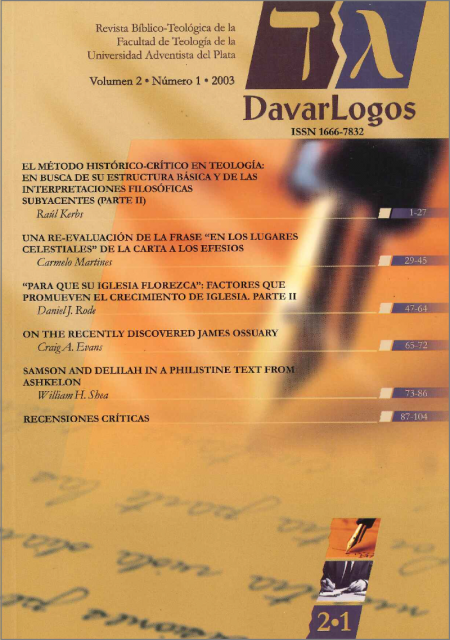UNA RE-EVALUACIÓN DE LA FRASE “EN LOS LUGARES CELESTIALES” DE LA CARTA A LOS EFESIOS
Resumen
En la carta paulina a los Efesios aparece cinco veces la expresión “en los lugares celestiales”, la cual es particular de esta epístola. La interpretación de esta frase ha presentado dificultades; para algunos eruditos está relacionada con el gnosticismo, otros le dan un sentido espiritual y algunos otros reemplazan “lugares” por “cosas”. Esta investigación sugiere que el análisis lingüístico de la frase en cuestión destaca un claro sentido local y espacial como una referencia implícita al santuario-templo celestial. El punto de vista paulino tiene como fondo el Antiguo Testamento donde la morada de Dios corresponde a la parte superior de la creación. De esta manera el tabernáculo-templo terrenal sirvió como modelo para representar al santuario-templo celestial. La frase “en los lugares celestiales” indica el locus del Cristo ascendido del cual provienen las bendiciones, la autoridad, la representación y el conocimiento.
Abstract
The expression “in the heavenly places” appears five times in the Pauline epistle to the Ephesians. The expression is unique to this epistle and its interpretation has been difficult. Some have connected it to Gnosticism, while others give it a spiritual sense or suggest replacing “places” with “things.” This study suggests that the linguistic analysis of the phrase clearly points to a spatial meaning and serves as an implicit reference to the heavenly temple-sanctuary. The Pauline viewpoint is rooted in the Old Testament concept that connects the divine dwelling place to the upper regions of creation. In this sense, the tabernacle (and later on the temple) served as model to represent the heavenly temple-sanctuary. The phrase “in the heavenly places” indicates the locus of the risen Christ, from which flow blessings, authority, intercession, and knowledge.





